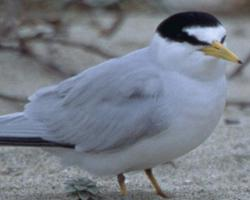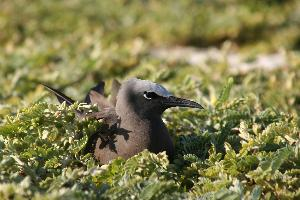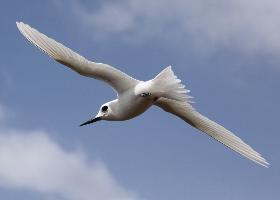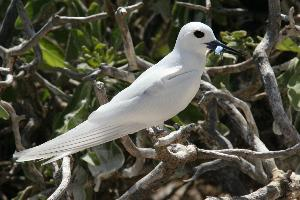
Stav ohrožení
| Ohrožen |
Popis zvířete
The Least Tern (Sternula antillarum) is a captivating and diminutive species of seabird belonging to the Laridae family, which encompasses gulls, terns, and skimmers. This small, agile bird is recognized for its remarkable adaptations to coastal life and its intricate behaviors during the breeding season. Despite its modest size, the Least Tern plays a significant role in its ecosystem, showcasing the intricate balance of marine environments.Physically, the Least Tern stands out due to its compact frame, measuring about 22 to 24 centimeters in length with a wingspan of approximately 50 centimeters, making it the smallest of the American terns. It possesses a slender, pointed bill colored a vivid yellow, with a black tip that becomes more pronounced during the breeding season. Its plumage is primarily a crisp, pale gray on the back and wings, with a starkly contrasting white underside. The adult breeding plumage features a distinctive black cap and nape, which transitions to a white forehead in non-breeding adults. One of the most striking features is its deeply forked tail, which it skillfully uses to maneuver in flight. The Least Tern's legs are short and are a vibrant yellow, adding a splash of color to its otherwise muted tones.
The Least Tern has a widespread distribution, breeding along the coasts of the southern United States, Mexico, Central America, the Caribbean, and northern South America. Some populations are migratory, traveling to the southern coasts of South America during the winter months, while others remain in their breeding range year-round.
This species exhibits remarkable breeding behaviors, forming colonies on sandy beaches, islands, or riverbanks, where they lay their eggs in shallow scrapes. These nests are often sparsely lined with shells or vegetation and are remarkably well-camouflaged against predators. The Least Tern is fiercely territorial during the breeding season, often seen diving and calling loudly at intruders, including humans, to protect its nest and young.
The diet of the Least Tern primarily consists of small fish, which it catches with impressive aerial dives into shallow waters. Its hunting technique involves hovering high above the water to spot its prey before plunging down to snatch the fish with its sharp bill. This diet is supplemented with crustaceans, insects, and occasionally small amphibians, making it a versatile feeder.
Conservation efforts are critical for the Least Tern, as its populations have faced declines due to habitat loss, human disturbance, and predation. The species is listed as Least Concern by the International Union for Conservation of Nature (IUCN), but local populations can be vulnerable, particularly those nesting in heavily developed or recreational areas. Conservation measures include protecting nesting sites, managing predator populations, and raising public awareness about the importance of these diminutive seabirds.
In summary, the Least Tern (Sternula antillarum) is a small, yet significant, member of the coastal ecosystem, distinguished by its delicate appearance, agile flight, and complex breeding behaviors. Despite facing challenges from environmental and human pressures, ongoing conservation efforts aim to ensure that this species continues to grace our shores for generations to come.
Podobná zvířata
Nové fotografie zvířat
Top 10 zvířat
- Chinese water dragon (Physignathus cocincinus)
- Galápagos tortoise (Geochelone nigra complex)
- Dolphin gull (Leucophaeus scoresbii)
- Japanese macaque (Macaca fuscata)
- Colombian red howler (Alouatta seniculus)
- Sea urchins (Echinoidea)
- Diana monkey (Cercopithecus diana)
- Moustached guenon (Cercopithecus cephus)
- Common house mosquito (Culex pipiens)
- Colossal squid (Mesonychoteuthis hamiltoni)


